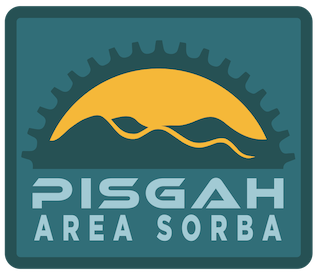Keeping Pisgah Trails Clear: A Look at Brushing and Clearing
Maintaining the trails in Pisgah National Forest is a labor of love, and a crucial part of that work is brushing and clearing. This essential task keeps our trails safe, accessible, and enjoyable for everyone, from hikers and bikers to equestrians. Winter is the ideal time for this work, as dormant trees offer better visibility and the results last longer.
Understanding Trail Classifications
Before we grab our tools, it's important to understand trail classifications. The US Forest Service Trail Class Matrix categorizes trails from rugged and indistinct (Type 1) to smooth and road-like (Type 5). Most Pisgah trails fall into Classes 2 and 3. Think of Cold Mountain or Buckeye Gap as Type 1, Squirrel Gap or Laurel Mountain as Type 2, and Black Mountain or Spencer Gap as Type 3. The Estatoe Trail, with its smoother surface, is a good example of a Type 4.
Each trail's classification dictates the size of the clearing corridor, which is tailored to its primary user group:
Equestrian: 6-8’ wide x 10-12’ tall
Hiking: 3-6’ wide x 8’ tall
Mountain Biking: 5-6’ wide x 8’ tall
As Tom Weaver of the Carolina Mountain Club explains, “Our standard corridor for a class 3 hiking trail is 6 ft wide and 8 ft high.” Mountain bike trails, as Jared Hartman of Pisgah Area SORBA notes, often fall between hiking and equestrian sizes, with wider clearing on busy trails for safe passing and on remote trails to reduce regrowth. For equestrian trails, Tom Thomas of Back Country Horsemen of Pisgah recommends a 6 ft width and a 12 ft height, although achieving that height often depends on dedicated equestrian volunteers.
Timing is also key. Grassy areas like Bennett Gap and Fletcher are best mowed in late summer to remain clear throughout the following season.
Brushing Technique: Do's and Don'ts
Brushing isn't just about trimming; it's about creating safe, natural-looking corridors while preserving the trail's sustainability. Here are some best practices:
✔️ Do:
Plan ahead: Prepare your tools, safety gear, and know the trail's corridor requirements.
Cut thoughtfully: Trim branches at a 45° angle, flush stumps to the trail tread, and cut larger branches near the trunk collar.
Dispose of debris properly: Toss debris below the trail with cut ends facing away from the tread.
Focus uphill: Clear aggressively on the uphill side to prevent erosion.
❌ Don’t:
Leave “eye pokers” or sharp stumps.
Pile debris in drains or toss it above the trail.
Ignore poison ivy or oak.
Over-clear or leave the trail looking messy. Aim for a natural aesthetic.
Stumps, Roots, and Branches
Dealing with these trail elements is crucial. We focus on:
Clean Cuts: Smaller branches are trimmed above a bud at a 45-degree angle. Larger branches get the three-cut method.
Flush with the Trail: Stumps and roots are cut flush with the tread.
Managing Trail Creep: We aggressively clear brush on the uphill side.
Tidy Debris Removal: All debris is placed below the trail.
Avoid these common mistakes:
Leaving “eye pokers.”
Piling debris in drains.
Leaving stumps or sharp edges.
Ignoring poison ivy and oak.
Tools of the Trade
Our trail crews rely on a variety of tools:
🪚 Hand Tools: Hand pruners, loppers, folding saws, and rigid saws.
🌲 Specialty Tools: Packable pole saws, sling blades or machetes, and pole-mounted hedge clippers.
⚡ Power Tools: Chainsaws (requiring additional training and safety gear), and walk-behind brush mowers.
Safety Gear: Gloves, safety glasses, ear protection, helmets, sturdy boots, and heavy pants are essential. Chainsaw operators need even more protection.
With the right tools, techniques, and a focus on safety, we can ensure Pisgah's trails remain clear, safe, and enjoyable for everyone. Stay tuned for future posts with more detailed information on specific techniques and challenges.







